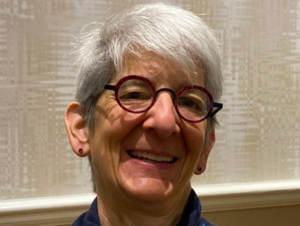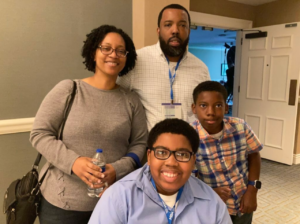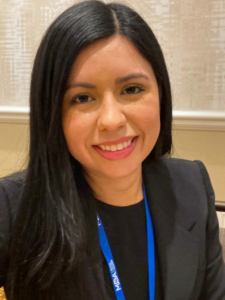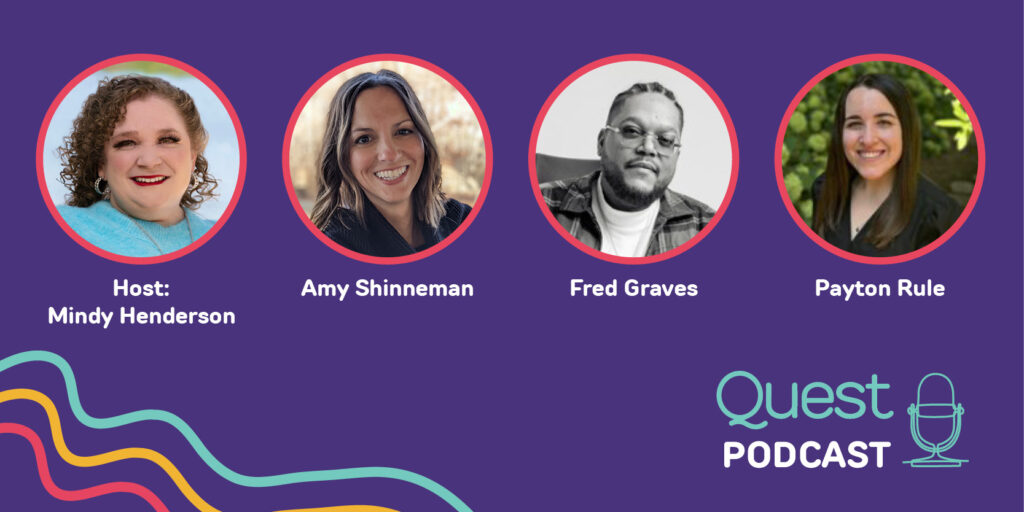
Promoting Diversity in Rare Disease Research
By Larry Luxner | Friday, April 8, 2022
Drug companies are developing more therapies for rare disease patients — and doing it faster — than ever before. But when it comes to enrolling minorities in clinical trials, the US track record is lagging behind.
That subject was the focus of a March 15 session during the 2022 MDA Clinical & Scientific Conference in Nashville, which brought together researchers, clinicians, and leaders from funding institutions and patient advocacy groups to learn from each other and collaborate across disciplines. Susan Apkon, MD, chief of pediatric rehabilitation at Children’s Hospital Colorado, chaired the panel on diversity in research.
“All people should have access to healthcare, novel treatments, and clinical trials that might offer them some benefit,” said Dr. Apkon, whose clinical focus is on children and adolescents with spinal muscular atrophy (SMA) and muscular dystrophies.
“But there’s also another reason we need to increase diversity in clinical trials: as a physician, I need to know the generalizability of that study’s results,” she added. “If I have a 10-year-old boy with SMA or a 16-year-old girl with FSHD [facioscapulohumeral muscular dystrophy], I need to know that the trial represents the child sitting in front of me.”
Access barriers
In 1993, the National Institutes of Health (NIH) enacted a mandate requiring women and minority groups be included in all NIH-funded research. Yet nearly three decades later, said Dr. Apkon, “we still have a long way to go.”
The US Food and Drug Administration (FDA) reported that of 300,000 participants enrolled in clinical trials globally for rare-disease therapies in 2020, nearly 75% were white, 11% Asian and 7% Black — and the pandemic has made those disparities even more apparent.

Dr. Susan Apkon (Photo by Larry Luxner)
“COVID has had a disproportionate impact on our families and friends who are Black, Hispanic and people of color,” Dr. Apkon said. “Healthcare, access to clinical trials, and vaccine trials haven’t been available to them at the same rate as for me as a white person. So clearly, COVID has uncovered some of these inequities.”
Many access barriers come down to economic issues.
“If you’re a person who works at an hourly rate and has no paid time off, those visits make it impossible to participate in a clinical trial. You’re not getting reimbursed for the time away from your job,” she said. “People in lower socioeconomic groups enroll in clinical trials at lower rates, and sadly, many Blacks and Hispanics are in these groups. Therefore, they enroll less often.”
In addition, when costs for travel or meals are reimbursed, how that payment is provided matters. According to Dr. Apkon, about 10% of Hispanics and African Americans don’t have checking accounts, “so if you give them a check, it’s an additional barrier.”
Furthermore, if drug companies give more than $600 to a patient or their guardian to participate in a study, “that’s considered income, and they actually have to report that,” she said. In addition, participants must provide social security numbers to get paid. Undocumented people don’t have social security numbers, and they may shy away from clinical trials for fear of being outed — yet another barrier to their participation.
A barrier that especially affects minority groups is lack of trust. “For Black patients, trust comes down to historical issues, such as the Tuskegee syphilis study,” said Dr. Apkon, referring to a study started in 1932 in Alabama that withheld treatment from Black men with syphilis in order to document the course of the disease.
A father’s plea for understanding
Jay Griffin, a Black father of two boys — 12-year-old Franklin, who has Duchenne muscular dystrophy (DMD), and 10-year-old Fraser — has experienced many of those access barriers.
“I’m only a dad advocating for my son,” Jay told his audience in an emotional speech. “I’m not on any payroll of any medical or research organization.”
Franklin was diagnosed at the age of 6, said Jay, who owns an ice cream shop in Harrisonburg, North Carolina.

Neekeesha and Jay Griffin pose with their sons Franklin, 12, who has DMD, and Frasier, 10. (Photo by Larry Luxner)
“We noticed that Franklin had large calves. He walked funny. He had trouble going downstairs. So, we went to different doctors to ask why he wasn’t developing the way he should,” Griffin said. The doctors thought Franklin’s development was just a little slow. “But when Fraser came along two years later, he was already doing everything Franklin should have been doing. I had to push and make people listen to what I saw.”
Doctors at Northeast Medical Center in Concord, North Carolina, eventually determined that Franklin’s CK level — a biomarker for DMD — was nearly 45,000. (The normal range for a child is up to 250.) “This is when our lives changed, when we confirmed that Franklin had Duchenne,” Jay said. “I really had to keep my emotions in check.”
A few nights a week, Griffin would stay late at his shop, cleaning his machines and cursing Franklin’s disease.
“I would verbalize every emotion I was feeling. I would yell and scream,” he said. “After I let out my emotions, I was able to go home. But during those times in the shop, I felt that science was moving too slow. I felt that just because of the color of my skin, I had to be more assertive than my peers who were going down the same road I was. All my life, this is what I’ve experienced — and dealing with Duchenne, this was just another chapter.”
Jay, who like most parents of DMD boys had never heard of the disease before his son’s diagnosis, eventually got Franklin into a clinical trial for vamorolone, a potential drug being developed by Santhera Pharmaceuticals as an alternative to high-dose corticosteroids such as prednisone and deflazacort — the current standard of care for boys with DMD — but without the serious side effects.
So far, Franklin seems to be doing well, without any of the behavioral issues, stunted growth, or bone fragility associated with steroids. Only weight gain has been an issue.
“I still feel helpless because I can’t fix my son’s condition. I can’t make Duchenne go away,” Jay told the audience composed mostly of medical scientists. “We are not asking you to carry our burden. As a dad, I appreciate each and every one of you. But your voice has to be louder than ours. You have to be the cheerleader, coming to where we are. You can’t come timid just because we have a hard time trusting.”
Why diversity is needed
Panelist Gisel Lopez, an associate director in global alliance management at Apellis Pharmaceuticals, explained that including diverse populations in clinical research leads to treatments that are safer and more effective for everyone.

Gisel Lopez (Photo by Larry Luxner)
“It is important to test drugs and medical products in the people they are meant to help,” she said, adding that this is why the FDA “works to make sure that people of different ages, races, ethnic groups, and genders are included in clinical trials.”
And yet, she noted that in some clinical trials for neuromuscular disease therapies, “there are zero Black and zero Hispanic patients.”
To remedy this, she urges drug companies to adopt practices that enhance inclusiveness, such as:
- Providing trial resources and documents in multiple languages
- Providing access to interpreters
- Using social media recruitment strategies to identify participants
- Offering electronic options for signing consent forms
Making these changes is the responsibility of those who organize clinical trials, but patient advocacy organizations can also make a difference.
Gisel shared a case in which, through genetic testing, doctors identified a 26-day-old girl in Chile who qualified for a trial for Spinraza to treat SMA in babies 40 days of age or younger. An advocacy organization was able to speed the process of confirming the diagnosis, getting a passport, applying for a US visa, traveling, screening, and genetic testing, so the child was dosed at Massachusetts General Hospital at 38 days of age. “And it completely changed the course of her life,” Gisel said.
Find an updated list of trials that are actively recruiting participants, or use MDA’s Clinical Trials Finder tool.
TAGS: Clinical Trials, Community, Healthcare, Innovation, Research
TYPE: Blog Post
Disclaimer: No content on this site should ever be used as a substitute for direct medical advice from your doctor or other qualified clinician.




